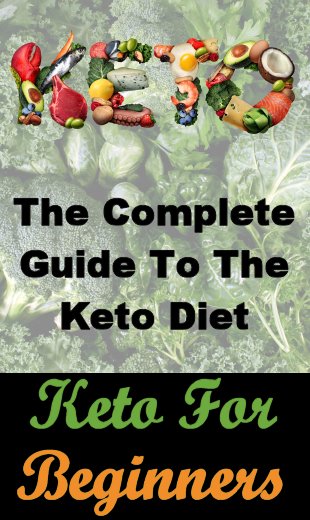Nightshade Plants – What They Are And Their Health Implications
This article looks at a family of plants known as nightshades, or, scientifically, Solanaceae, including what they are, some common varieties, and their implications regarding our health.
What Are Nightshades?
This family of plants includes around 2,000 varieties, which can take the form of herbs, shrubs, trees, and lianas / vines.
Out of all these nightshade plants, only a relatively small number are edible.
Some of the inedible varieties include tobacco and belladonna, which is a well-known highly toxic plant.
Of the edible types, the most popular ones include:
- Ashwagandha (which is a popular herb used in Ayurvedic medicine)
- Aubergines (aka eggplants)
- Goji berries (aka wolfberries)
- Okra
- Peppers (including both hot and sweet varieties, as well as spices made from them such as cayenne, paprika, and Tabasco sauce, but note that regular black or white pepper are not nightshades)
- Pimentos
- Potatoes
- Sorrel
- Tomatillos
- Tomatoes
Health Benefits Of Nightshades
Some nightshades do confer a variety of health benefits:
- Aubergines. Also known as eggplants, these are technically fruits that contain zero cholesterol or fat. They do not provide significant amounts of any specific minerals or vitamins, but they do offer small amounts of most of the minerals and vitamins that you need.
- Goji Berries. These berries provide antioxidants, fibre, minerals (e.g. iron, zinc), and vitamins (e.g. A, C).
- Okra. While not especially popular in many countries, okra supplies calcium, fibre, iron, protein, and zinc.
- Peppers. These include bell peppers and chilies, and they are low in both calories and fats. They can also be a good source of vitamins (e.g. B, C, and K) as well as fibre. It is also believed by some that one of the constituent parts of peppers, capsaicin, can help relieve arthritis.
- Potatoes. While these are starch-laden carbohydrates, they do have the benefit of being low in fat and they are a great source of fibre. From a nutrient perspective, they provide various minerals (e.g. copper, folate, iron, manganese, niacin) and vitamins (e.g. B6, C). Carbs aside, baking them is the least unhealthy way to eat them, especially if you swap the butter for something else such as sour cream and herbs.
- Tomatoes. This fruit contains antioxidants (e.g. alpha-carotene, beta-carotene, lutein, lycopene), minerals (e.g. calcium, potassium) and vitamins (e.g. A, B, E, K).
Nightshade Sensitivity
So if these edible nightshades provide many of the nutrients we need, as well as other claimed benefits, what are the problems with them?
For many, it’s the alkaloids, specifically glycoalkaloids, that they contain.
Alkaloids are often present in plants to help prevent them from being eaten (e.g. by insects) or being infected by bacteria or viruses.
These alkaloids have been linked to a number of health issues, and the problem is that some people are sensitive to these alkaloids.
Here are some of the common symptoms that may be explained by an intolerance to nightshades:
- Auto-immune conditions (e.g. some forms of arthritis)
- Breathing problems
- Diarrhoea
- Dizziness
- Fainting
- Gastrointestinal issues (e.g. IBS, leaky gut syndrome)
- Heartburn / acid reflux
- Hives
- Itching
- Joint pain
- Rashes
- Swelling, especially around the mouth / tongue or throat
- Tingling in the mouth
- Wheezing
They can also aggravate other existing conditions (e.g. fibromyalgia).
Note that an intolerance or sensitivity is not the same as an allergy – allergies can result in anaphylaxis, which may be life-threatening, whereas sensitivities usually result in discomfort but nothing more serious.
If you suffer from any of the above, or a combination of them, then it’s possible you may be having a reaction to nightshade plants in your diet.
It would therefore be worth maintaining a food journal, recording what you eat and whether / when you have any reactions.
You can also try an elimination diet, removing any nightshades from your meals or snacks, and seeing if your problems diminish or disappear. If they do, you can try to reintroduce items, one at a time, to see whether it’s one specific nightshade that is causing your problems.
You also need to look out for hidden ingredients, i.e. those that may be added to products where it may not initially be obvious that they contain a potentially problematic fruit or vegetable).
Some probably go without saying. For example, if you buy a jar of pasta sauce, it’s a fairly safe bet that it will contain tomatoes.
But others might include some of those nightshades as secondary ingredients, where you might not expect to see them. For example, USA-made soy sauce is commonly made using genetically modified (GMO) soy beans that are cut with Petunia, which is a nightshade plant.
You therefore need to read labels very carefully, and not just for food items because potato starch, as one example, may be present in both over-the-counter and prescription medications as a filler, as well as in some baking powder. And, of course, vodka is made from potatoes, so that’s something else you may need to avoid. It may even be present on envelopes as part of the adhesive used on the flap that you lick!
Another option you should consider is the Autoimmune Protocol (AIP) diet, which is a version of the Paleo diet but without the nightshades (and other foods that can trigger inflammation).
You’ll also find some anti-inflammatory recipes here.
And if you do have forgo some of your favourite ingredients (e.g. potatoes, tomatoes), there are alternatives that you can use as substitutes if you need to.
For example, regular white potatoes can be swapped out and replaced by parsnips, sweet potatoes, or turnips, and if you want to make a healthier mash, then mashed cauliflower is one option.
Conclusion
On the plus side, nightshade plants do offer some health benefits and can be valuable sources of the nutrients are bodies need.
On the other hand, it’s not currently known how many people suffer from a nightshade intolerance, but for those that do, it’s a shame given that nightshades include some of the most popular fruits and vegetables eaten today.
So unless you have a definite and severe sensitivity to them, I would suggest, as usual, moderation in all things.
Additional Resources
These are suggestions for those who wish to delve deeper into any of the above, and all of the turmeric products are ones I use:







